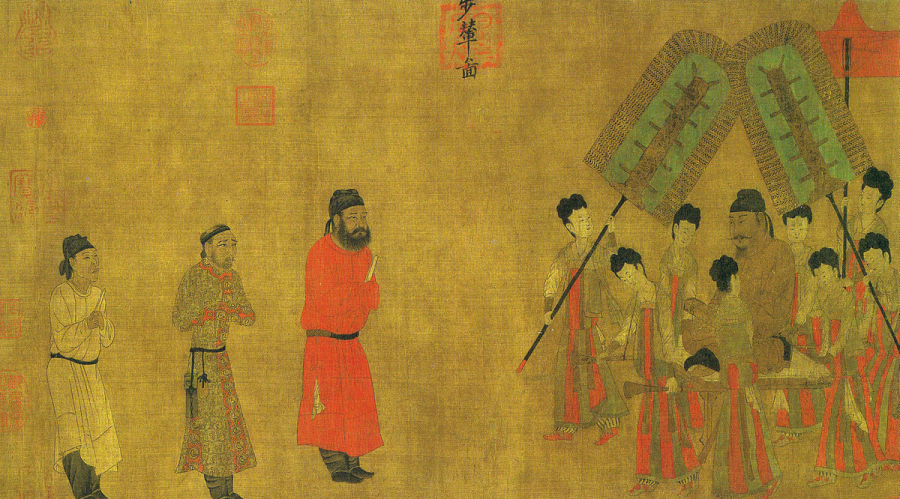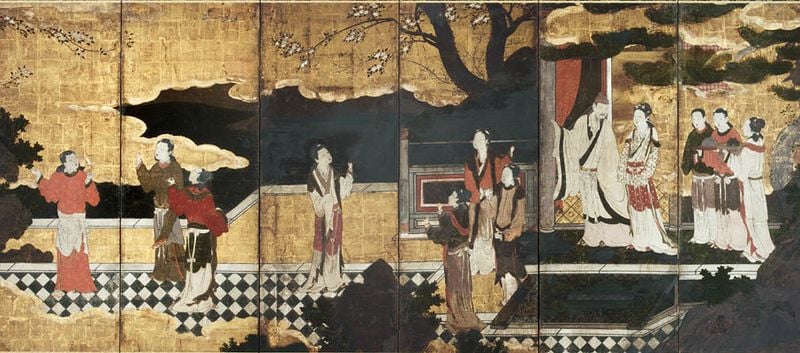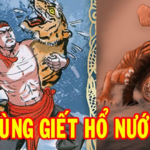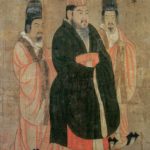The Establishment of the Tang Dynasty
In 618, the civil war came to an end with the Duke of Tang, Li Yuan, emerging victorious. He reunified China and established the era of the Tang Dynasty, earning him the title of Emperor Gaozu. However, his sons fought amongst themselves for the right to succeed the throne. His two eldest sons, Li Jiancheng and Li Yuanji, both lost their lives in this power struggle. Li Yuan was left with only one viable option, his surviving son Li Shimin. In 626, Li Yuan abdicated in favor of Li Shimin, who would later lead China into a period of prosperity and golden age.

The Martial Emperor’s Seizure of Power
However, the successor of Emperor Taizong, Li Shimin, proved to be a weak and insecure ruler, leading to conflict and bloodshed within China. The turmoil began when one of Emperor Taizong’s concubines, Empress Wu Zetian, sought to ascend to the throne in place of Li Shimin. Wu Zetian employed traditional methods to eliminate her enemies, including killing the empress and several others. Wu Zetian became the Empress, and she exiled, killed, or forced numerous senior officials to commit suicide.
Emperor Li Shimin endured a crisis during his 11-year rule, becoming weak and insignificant. Empress Wu consolidated her power further. She eliminated the remaining members of the Li clan, whom she saw as her rivals, and promoted members of her own family to positions of power. In 690, she deposed her own son, Li Dan, and declared herself the ruler at the age of 67, establishing a short-lived dynastic regime called Zhou.
Empress Wu Zetian is the only female emperor in Chinese history. Through the use of puppet figures, she created a government based on fear. Wu Zetian purged Confucian scholars and other dissenting elements. But she also built a political foundation by providing for the public needs and promoting those officials who supported her. She was a devoted follower of Buddhism and surrounded herself with like-minded men, monks, and ordered the construction of temples in every county.
In her old age, Empress Wu gradually lost control of the court, and in 705, the court officials forced her to step aside and return the throne to one of her sons, Li Xian, whom she had previously deposed in 684. Emperor Zhongzong Li Xian returned to power and ruled until his death in 710 – his wife, Empress Wei, was suspected of poisoning him. Empress Wei sought to rule like Empress Wu. She sold titles and positions, and she was also behind corruption cases in the court. She created enemies that she couldn’t eliminate, and they gathered forces for a coup that killed Empress Wei and restored Li Dan, whom she also deposed and was originally overthrown by Wu Zetian, to the throne.
These allies turned against each other. However, the power struggle quickly ended with the absolute advantage of a prince of the Tang Dynasty, who ascended the throne in 712, Emperor Ruizong Li Longji.
The Golden Age under the Reign of Emperor Ruizong of Tang

Emperor Ruizong ascended to the throne at the age of 28 and ruled for 44 years. He was energetic and courageous, and under his reign, prosperity returned. However, in his later years, he became increasingly absorbed in Daoist philosophy and lost interest in governance. After 745, he became infatuated with one of his concubines, Yang Guifei, and neglected state affairs. The court became chaotic due to power struggles among the court nobles and regional warlords. China quickly fell into decline.
Downfall
In the power struggle within the court, a third force unexpectedly emerged. This group was known as the eunuchs. They displayed clever maneuverings, taking advantage of both sides to gain control of the court. In the later years of the Tang Dynasty, the eunuchs completely manipulated the court, even having the power to choose who would become the emperor. Out of the 22 emperors of the Tang Dynasty, 10 were installed by the eunuchs. All of them ruled during the final years of the Tang Dynasty.





































